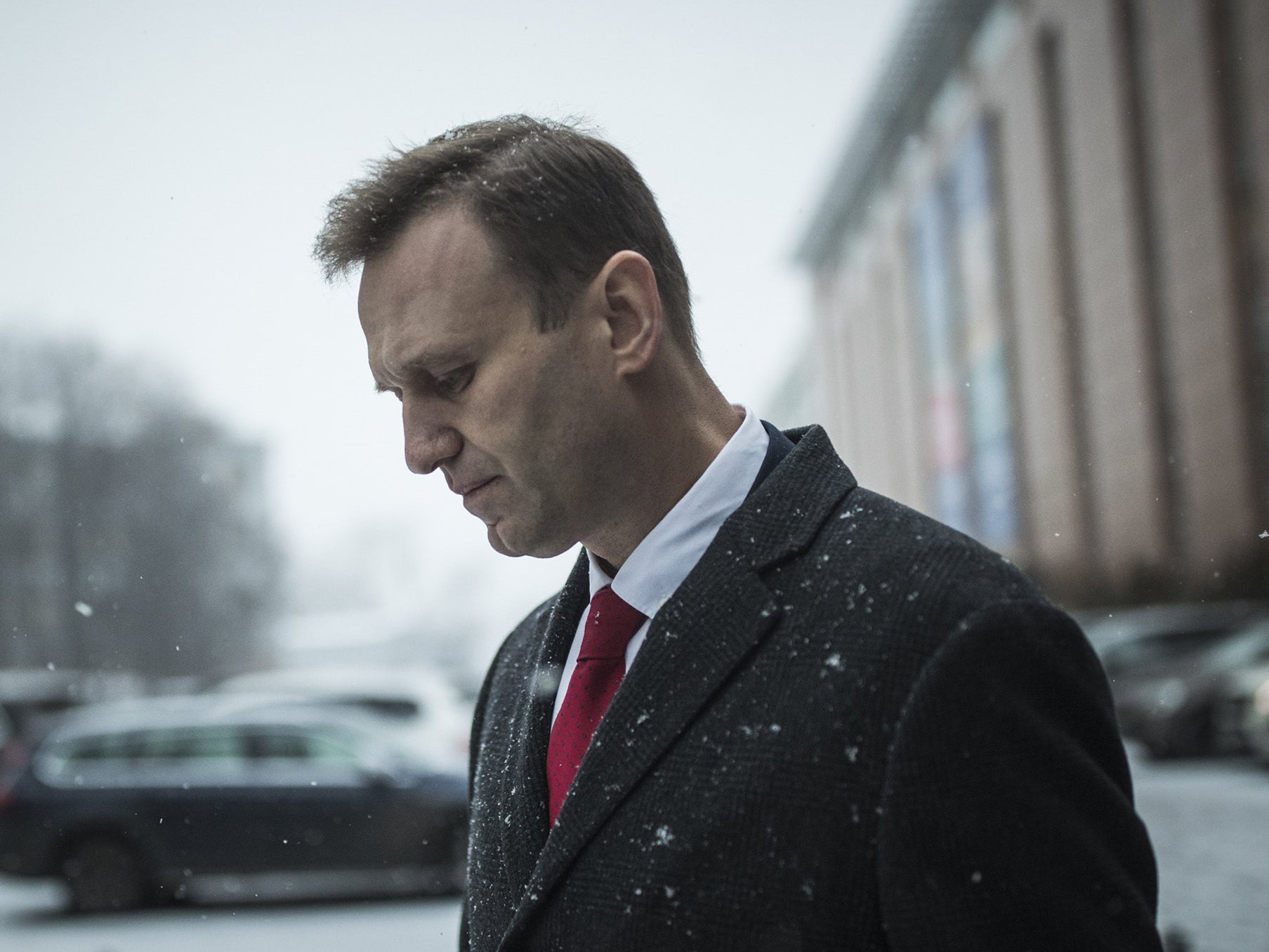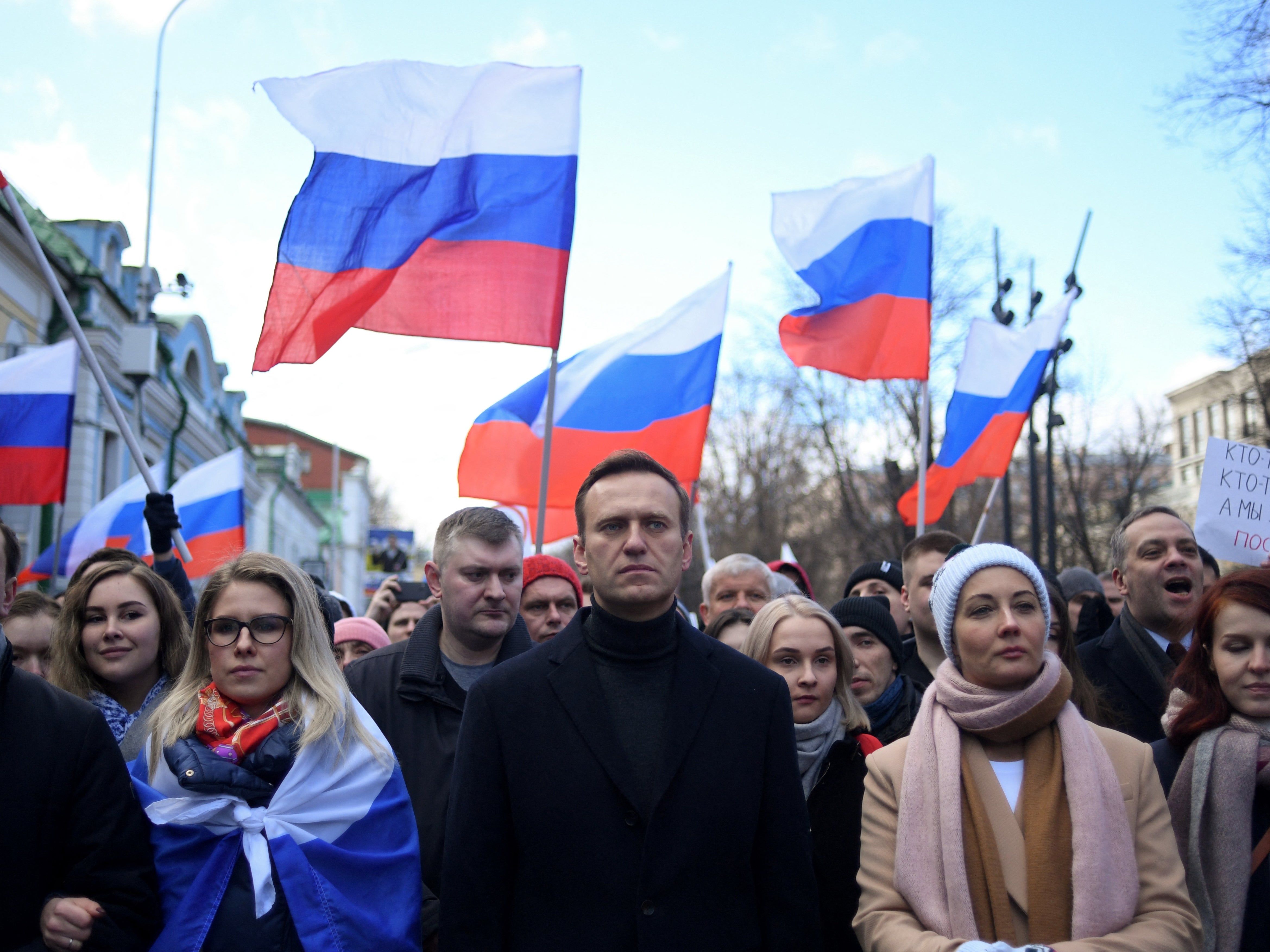Alexei Navalny – the man who knew too much
For a decade and more, he and his team deployed a mix of tenacity and mockery to probe the Mafia-style financial links between those at the top of Russian politics, security and business, writes John Kampfner. Frozen out of state-controlled mainstream media, Navalny used every digital platform and every social media channel available to shine a light on Putin’s corrupt regime, surviving multiple poisonings and incarceration until he was finally – and inevitably – silenced by his greatest foe...

The reason why it all happened is one man’s hatred and fear – one man hiding in a bunker. I mortally offended him by surviving an attempt at my life he ordered. And then I committed an even more serious offence: I didn’t go into hiding. And that’s driving this thieving little man in his bunker out of his mind.”
So declared the accused from behind his courtroom cage as he prepared to be sentenced to jail. His crime was to have challenged the man in the Kremlin, Vladimir Putin, with the one tool remaining, the power of speech.
That act of defiance exactly three years ago, was the beginning of the end of the life of Alexei Navalny.
The blogger, vlogger, humourist and deeply earnest arch-critic of this most evil of regimes was to see his prison sentence repeatedly extended, his place of captivity made increasingly barren and remote.
The only way Navalny might have escaped death would have been if his nemesis had been toppled from his throne. The reverse has happened. Putin has since that point invaded a neighbouring country and seen off all who have challenged. He has survived with relative ease.
Navalny’s death, announced yesterday with typical nonchalance by prison authorities, coincided with the start of the Munich Security Conference, the annual gathering of the world’s political and military leaders.
The outpouring of condemnation by the global elite might, to a normal regime, be embarrassing. Russia was not invited, but such is Putin’s contempt for his critics, he would have been basking in the opprobrium.
Navalny first came to prominence during protests in the winter of 2011-12. Putin had, as was his wont, been rigging another set of elections. Navalny persuaded huge numbers onto the streets of Moscow to protest against corruption.
He told the crowd that Putin’s party, United Russia, should be renamed the “party of crooks and thieves”. He was briefly imprisoned and then released – Putin at that point was an authoritarian crook rather than one of the ruthless dictators of the past century.

In 2013, Navalny came second in elections for the Mayor of Moscow, a remarkable feat given he was repeatedly arrested, his family was followed, his finances were frozen. When he tried to take on Putin for the actual presidency in 2018, he was prevented from doing so.
Navalny was poisoned not once but twice – possibly three times, if that was his fate at the location of his final incarceration north of the Arctic Circle. He had looked in reasonable form, despite the dire circumstances, in a courtroom shortly before.
In the first attempt on his life, in 2017, unidentified men flung green dye in his face. He lost partial sight in one eye. Ironically by 2020, the opposition seemed to be losing momentum. Putin had rewritten the constitution allowing him to serve until 2036 at least and parliament and the courts nodded that through, as they have always done.
Nevertheless, Navalny did not stop fighting. In one of his many more-in-hope-than-expectation campaigning trips to the hinterland, he fell violently ill on a flight from the Siberian city of Tomsk back to Moscow.
The only way Navalny might have escaped death would have been if his nemesis had been toppled from his throne. The reverse has happened
A video shot by a passenger showed him screaming in agony mid-flight. The plane made an emergency landing in the nearby city of Omsk. He was rushed to hospital. If it were not for the extraordinary quick-wittedness of the pilot, the paramedics on the ground, and the doctors in Germany to whom he was whisked, he would have died.
Which after all was the intention when operatives of the FSB (the successor to the KGB) sneaked into Navalny’s hotel room in Tomsk and smeared the seams of his boxers with the chemical agent Novichok.
Later, in one of several films he made spoofing the Kremlin, Navalny managed to get through on the phone to an operative, pretending to be a colleague. The hapless thug admitted that the attempt to kill him hadn’t gone to plan. Navalny gave Putin a new nickname: “the underpants poisoner”.
He spent five months in Berlin recuperating. Despite advice from German security and Russian friends that his life would be in danger, he began planning his return home. He insisted that opposition figures who stayed in exile were easy to dismiss.
He may have been right in that, but it seems he underestimated Putin’s determination to kill him. This seems strange given that by this point Putin had already succeeded or nearly succeeded in liquidating dozens of people around the world.
Navalny knew too much. For a decade and more, he and his team had been probing the Mafia-style financial links between those at the top of Russian politics, security and business.

Frozen out of state-controlled mainstream media, he used every digital platform, every social media channel available. He mixed tenacity with mockery.
He had a number of successes, but none that matched a remarkable YouTube video called Putin’s Palace broadcast just two days after he was thrown in jail in 2021.
He starts the tale in Dresden, talking about Putin’s past as a KGB operative there. He then turns to the camera, and, without naming his audience of one, he tells him: “You know I know things that you would rather I didn’t know”.
The two-hour epic, part forensic investigative journalism, part slapstick, describes in painful detail every aspect of the top-secret billion-dollar palace on the Black Sea.
Russians had heard the rumours. The 100 million people around the world, including 70 million in Russia, who watched it in the first week alone, were about to see it up close. The estate, 30 times the size of Monaco, has its own airstrip, border guards and checkpoints.
It contains 700 acres of vineyards, a helipad, a succession of Versailles-style reception rooms, a casino and a church (a great combination), a subterranean ice-hockey-rink-for one, even something called an “aqua-discotheque”. Even by the standards of contemporary Russia, it is a monument to vulgarity and kleptocracy.
Putin is said to be worth tens of billions, but nobody knows the extent of it. He will stay in power for as long as he can, protected by an entourage that together has secreted much of their country’s wealth. They have nowhere to go; they must see off anyone who gets in their way. Alexei Navalny happened to be more brazen than most.






Join our commenting forum
Join thought-provoking conversations, follow other Independent readers and see their replies
Comments